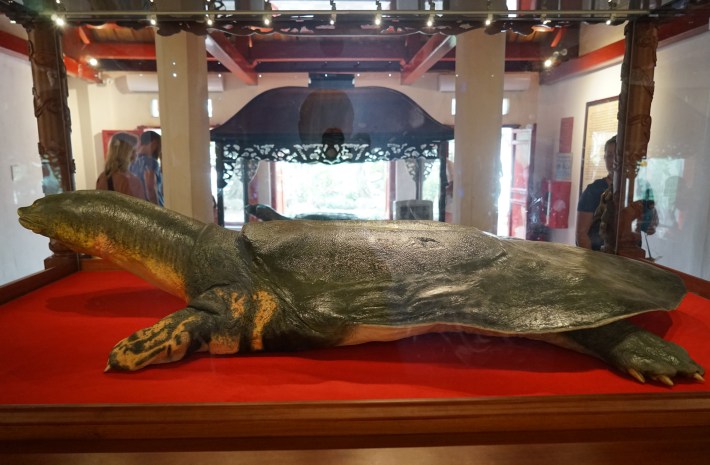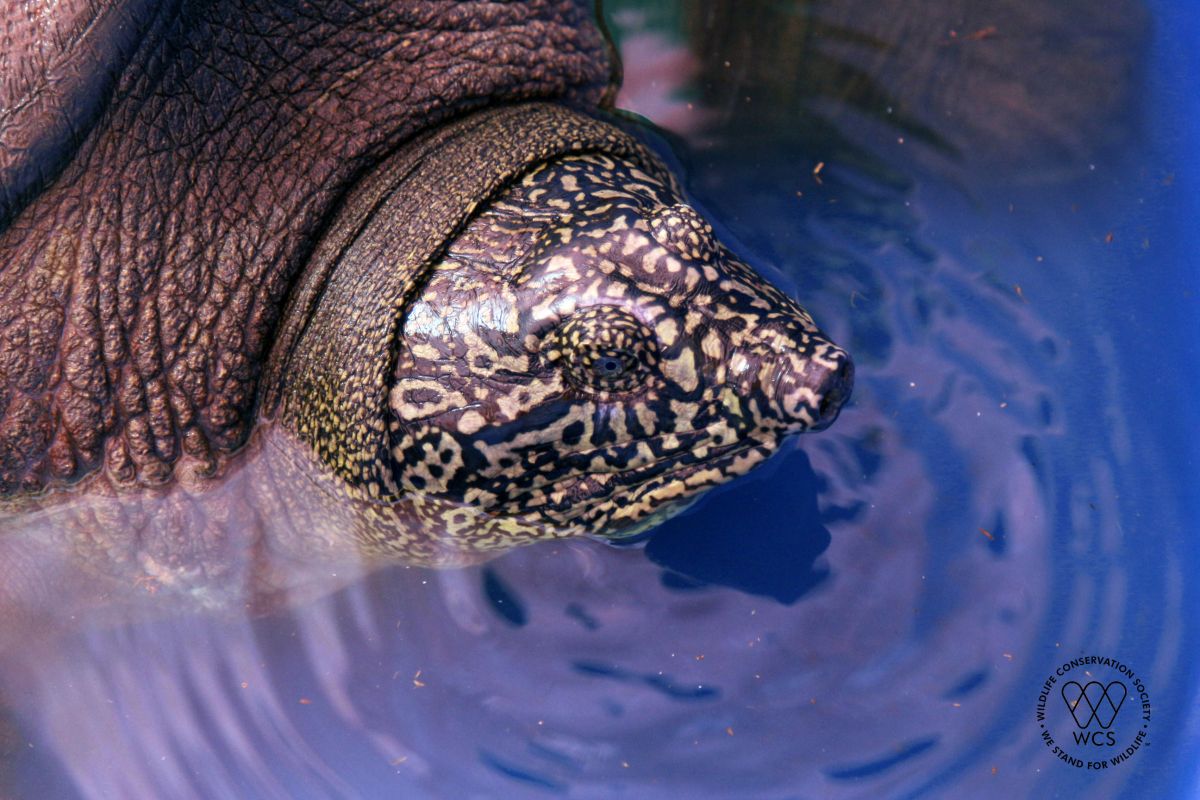In October 2021, after weeks of searching, a boulder-sized turtle with an intricately squiggled face and piggish snout was discovered in Đồng Mô Lake on the outskirts of Hanoi, Vietnam. Researchers analyzed her blood and confirmed the turtle was a female Yangtze giant softshell turtle, or Rafetus swinhoei, the first known female of her species since 2019. Turtle conservationists rejoiced; the species had dwindled to just one male Yangtze giant softshell turtle living in a zoo, and the discovery of the female offered science a last chance to revive the species.
But in late April of this year, the female washed up dead on the shores of Đồng Mô Lake. She was more than five feet long and weighed more than 200 pounds—a truly giant turtle. Now there are just two surviving Yangtze giant softshells, both male, one living in Suzhou Zoo in China and the other in Xuân Khanh Lake in Hanoi. The cause of death remains unknown, Time reported.
Within the last century, the turtles were abundant in rivers in Vietnam—as common as "chickens in the garden" in Đồng Mô Lake, a former turtle hunter Le Huy Hoanh told Mongabay. But decades of hunting, dams, and pollution fragmented and killed off almost all of the remaining turtle populations. The species' extinction is not yet certain—the Asian Turtle Program has hope there may be another R. swinhoei turtle surviving in Đồng Mô Lake—but it seems the most likely possibility. It would be an unsurprising end, foreshadowed by years of quests for wild turtles that turned up empty and artificial insemination efforts that failed, or, worse. (Xiangxiang, the 90-year-old female Yangtze giant softshell, died in 2019 after a fifth attempt at artificial insemination.) And even if a miracle were to happen and another female turtle were to surface somewhere in the wild, the turtles' natural habitat of the Yangtze River and Red River in China and Vietnam and surrounding wetlands have been degraded, polluted, and dammed.

Yangtze giant softshell turtles are known as Hoàn Kiếm turtles in Vietnam. According to legend, a man named Lê Lợi received a sword from the heavens to drive out an occupying army, was eventually crowned emperor, went out boating and encountered a golden turtle who asked for the return of the heavenly sword, as Claire Voon described in Atlas Obscura. The lake was renamed Hồ Hoàn Kiếm, or "Lake of the Returned Sword," and giant softshell turtles swam there until 2016, when the last turtle inhabitant, called Cụ Rùa, was found dead and floating in the middle of the heavily polluted lake. The turtle's body is now embalmed in a temple, where you can take a selfie with him.

Every extinction is a tragedy, but I hold a special space in my heart for the weirdos: turtles with pig snouts, freshwater dolphins with needly Gharial snouts, fish with comically gaping jaws. And these are just the species recently extinct, or at least nearly there, in the Yangtze and surrounding rivers. As the biodiversity crisis barrels toward more and more ends, strangeness can be a fatal flaw for a species. A paper published in March in the journal Nature Communications suggests the most endangered turtle and crocodile species have unique life history strategies, such as the pancake tortoise, which has an extremely flat shell and lays a single egg each year. A 2022 paper in the journal Functional Ecology found that birds with extreme or unusual traits are at the highest risk for extinction, citing the Christmas frigatebird, which only nests on Christmas Island, and the bristle-thighed curlew, which breeds in Alaska and winters in the South Pacific.
There is no other turtle like the Yangtze giant softshell turtle, a creature who, and I say this lovingly, resembled an animated cowpat. It has gloriously stubby, wrinkled limbs and a head that can retract almost entirely into its neck or extend like a periscope above the water. The species's closest relative is the Euphrates softshell turtle, another large and disgruntled-looking turtle found in the Euphrates and Tigris river systems, which is also endangered for many similar reasons.
Although the now-dead Yangtze giant softshell turtle was only captured in 2021, she was first detected in Đồng Mô Lake in 2007, according to the publication VnExpress. For a time, another similar turtle lived alongside her in the lake, and the two were once photographed together, their wrinkled necks craning out of the water, a sight that, in the turtle's heyday, was so common that no one would have thought it would be worth taking a picture.






